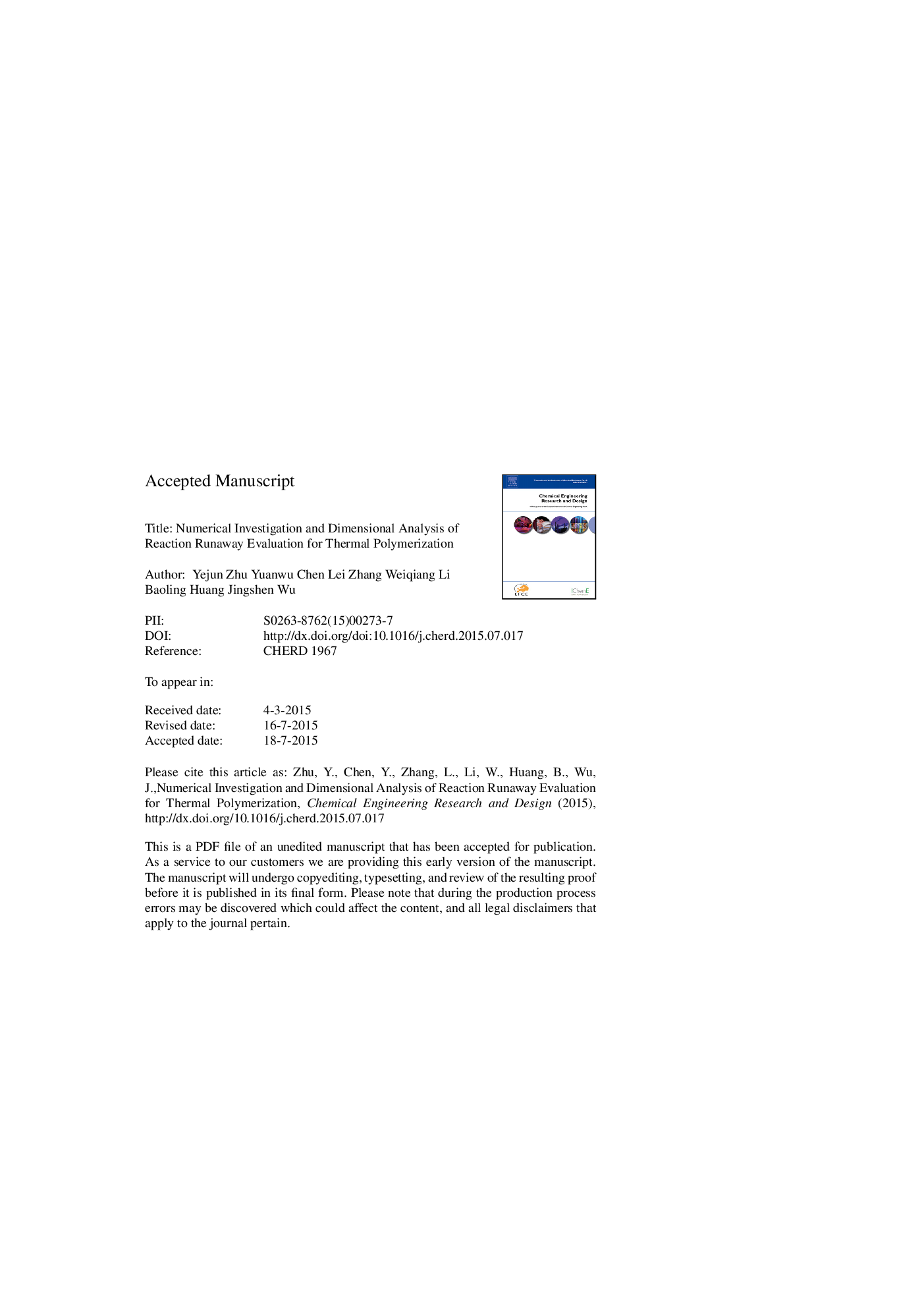| Article ID | Journal | Published Year | Pages | File Type |
|---|---|---|---|---|
| 7007161 | Chemical Engineering Research and Design | 2015 | 51 Pages |
Abstract
Reaction runaway has always been the most dangerous issue for bulk thermal polymerization, especially in large scale industrial production. For highly exothermic reactions, improperly controlled reaction leads to thermal runaway and even explosion. Continuous dropping reaction method is considered to have advantages over the commonly used batch reaction method on thermal management since the energy release rate can be delicately controlled by reactant feeding rate. Reliable modeling is a key tool to get high productivity for thicker and larger products with a lower thermal runaway risk. In this study, a model of one-dimensional heat transfer is constructed and numerically solved though the finite difference method to investigate reaction runaway. Lab scale fabrication of cross-linked polystyrene proves the accuracy of the numerical model. The validated model has been applied to investigate the roles of most important factors for large scale production, including product size, temperature and feeding rate. It was found that the reaction layer thickness is the key factor for explosive reaction. Smaller product size, higher temperature and smaller feeding rare can ensure safe production. A non-dimensional analysis based on energy analysis is thereafter proposed for evaluating the reaction runaway risk during thermal polymerization.
Related Topics
Physical Sciences and Engineering
Chemical Engineering
Filtration and Separation
Authors
Yejun Zhu, Yuanwu Chen, Lei Zhang, Weiqiang Li, Baoling Huang, Jingshen Wu,
